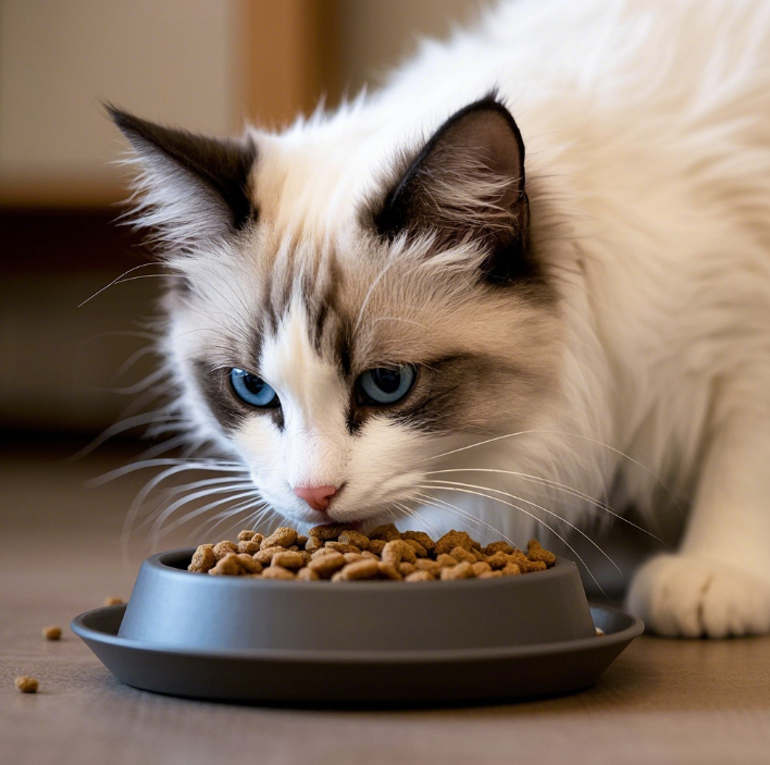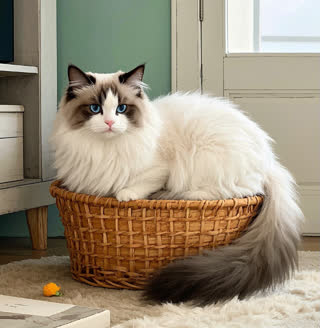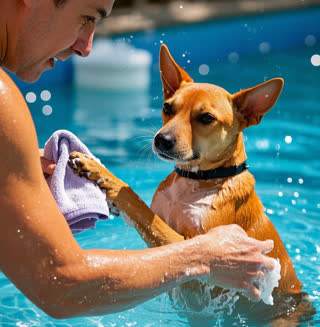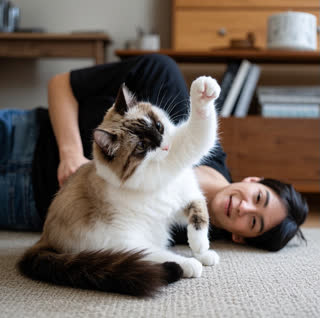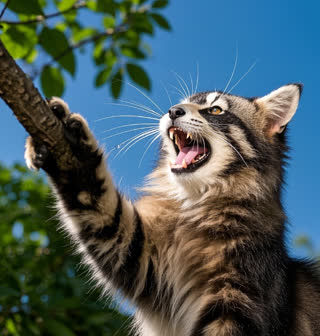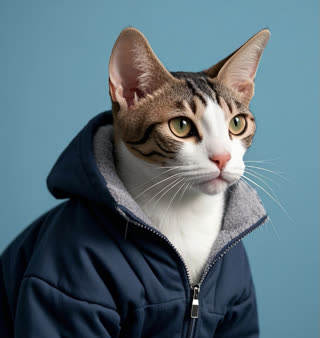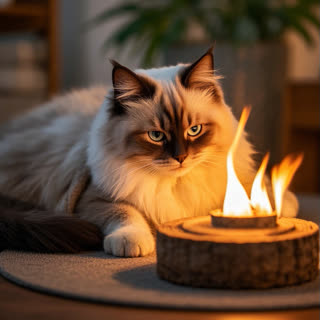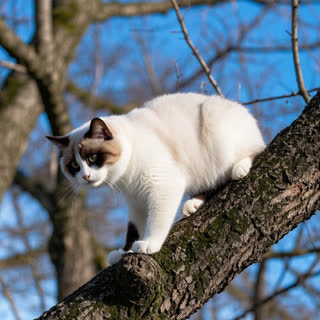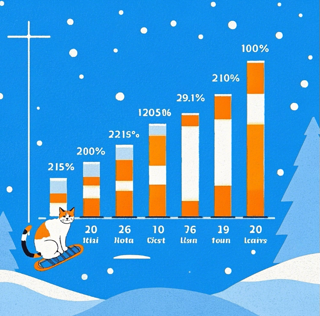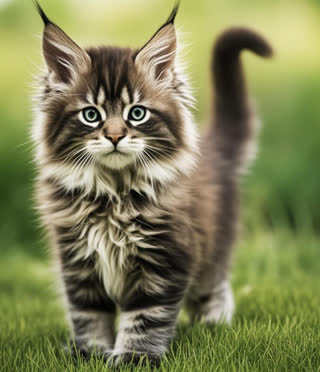The Ragdoll cat breed, known for its striking blue eyes and docile temperament, requires specialized nutrition to maintain the signature silky coats and muscular frames characteristic of this gentle breed. With 68% of Ragdoll cat owners reporting dietary-related health issues (2023 Feline Nutrition Survey), understanding the best diet for Ragdoll cats becomes crucial for responsible care of this unique cat breed.
Understanding the Best Diet for Ragdoll Cats
Ragdoll cat food portions, Wet vs dry food for Ragdolls
Ragdolls have distinct nutritional requirements due to:
Slow maturation rate (4-year growth period)
Higher risk of urinary tract issues
Tendency for obesity in indoor environments
Key nutritional components:
40-50% high-quality animal protein
20-30% healthy fats (omega-3 for coat health)
<10% carbohydrates
"The average adult Ragdoll needs 280-320 calories daily, but portion control must consider activity levels," notes Dr. Emily Carter, DVM at Feline Nutrition Institute.
[Data Visualization Suggestion]
| Food Type | Daily Portion (adult) |
|---|---|
| Dry Food | 1/2 - 3/4 cup |
| Wet Food | 6-9 oz |
Life Stage Nutrition Requirements
Ragdoll kitten feeding schedule, Senior Ragdoll cat nutrition
Kitten Phase (0-12 months)
Feed 4x daily (scheduled meals prevent overeating)
Require 35%+ protein for proper muscle development
Essential nutrients: DHA for brain development
Adult Maintenance (1-7 years)
Transition to 2 meals/day at consistent times
Incorporate dental health components
Senior Years (7+ years)
Increase fiber content (3-5%) for digestive health
Add joint support supplements
Reduce phosphorus load for kidney protection
Wet vs Dry Food: Making the Right Choice
Comparative Analysis:
| Factor | Wet Food Advantage | Dry Food Benefit |
|---|---|---|
| Hydration | 75-80% moisture content | 8-10% moisture |
| Dental Health | Reduces plaque buildup | |
| Caloric Density | Easier portion control | Higher per cup |
Expert Tip: "Combine 60% wet food with 40% dry for optimal urinary tract health," recommends the ASPCA Feline Nutrition Guidelines.
Avoiding Top 5 Feeding Mistakes
Best diet for Ragdoll cats maintenance
1 Free-Feeding Temptation
Leads to 42% higher obesity rates (Journal of Feline Medicine)
Solution: Use timed feeders for portion management
2 Ignoring Water Intake
Ragdolls need 4-6 oz water daily per 5lbs body weight
Pro Tip: Add water fountain to encourage drinking
3 Human Food Dependency
Dangerous foods list:
✗ Onions ✗ Chocolate ✗ Raw fish
4 Over-Supplementation
Risk of vitamin D toxicity
5 Static Diet Maintenance
Requires seasonal adjustments (winter vs summer needs)
Homemade Diets: Safe Implementation
Homemade diets for Ragdolls
Essential Components Checklist:
✓ 80% muscle meat
✓ 10% organs (5% liver mandatory)
✓ 10% crushed bone
✓ Add taurine supplement
Caution: USDA reports 73% of homemade diets lack essential nutrients without proper formulation.
Special Circumstances Nutrition
Medical Conditions Requiring Diet Adjustments:
Hypertrophic Cardiomyopathy: Increase taurine to 500mg/day
Diabetes Management: Low-carb (
Kidney Disease: Phosphorus restriction (0.3-0.6%)
Transitioning to Better Nutrition
Step-by-Step Guide (4-week plan)
| Week | Old Food % | New Food % |
|---|---|---|
| 1 | 75 | 25 |
| 2 | 50 | 50 |
| 3 | 25 | 75 |
| 4 | 0 | 100 |
Implementing the best diet for Ragdoll cats requires understanding their unique biological needs across different life stages. By avoiding common portioning errors and making informed choices between wet/dry formulations, owners can add 2-3 healthy years to their feline companions' lifespan.
